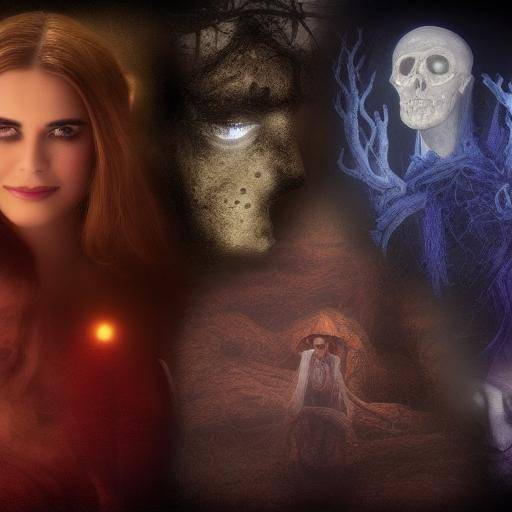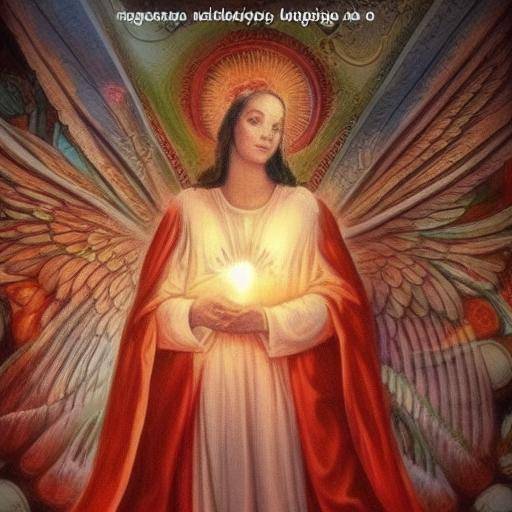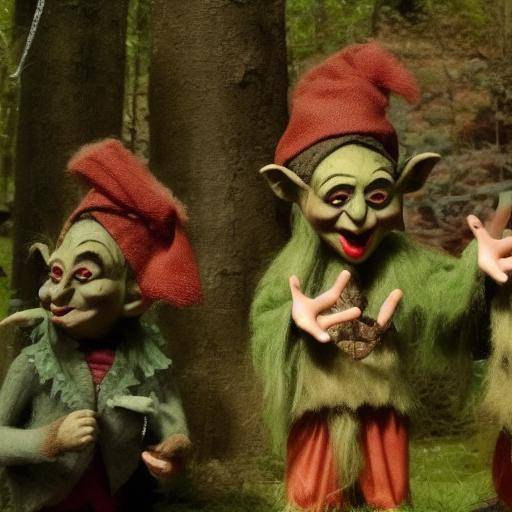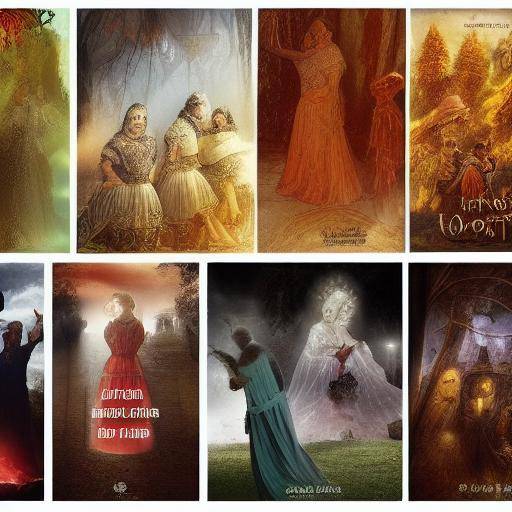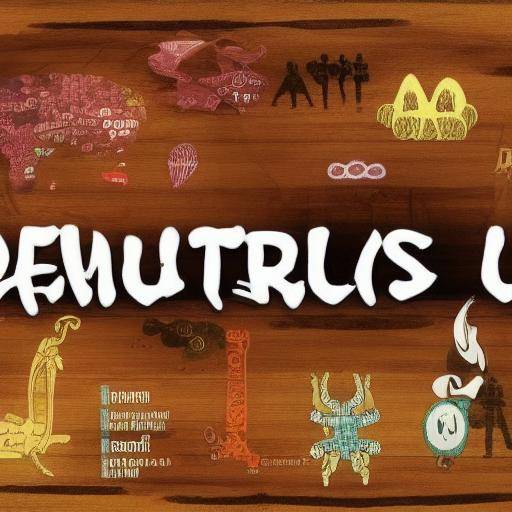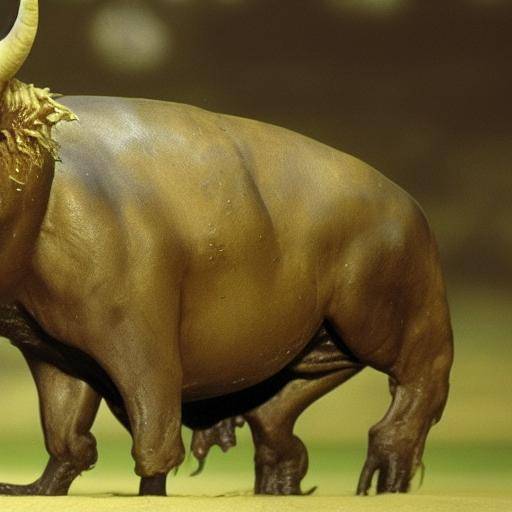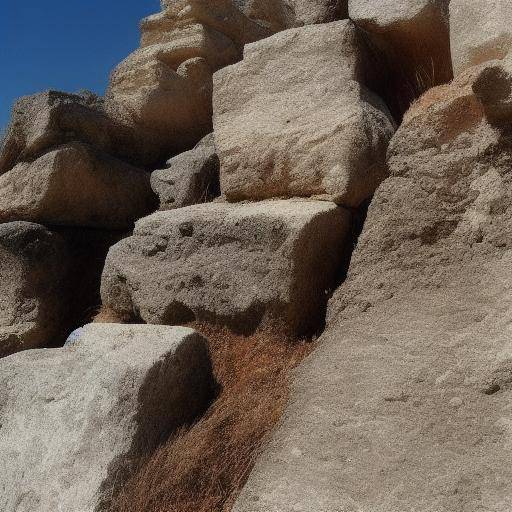
The jinn, also known as geniuses or spirits, are supernatural beings that are rooted in the Arab mythology. These mysterious creatures have captured the imagination of people throughout the centuries, and their legacy persists until today. In this article, we will thoroughly explore the fascinating history, cultural impact, beliefs and myths surrounding jinn in Arab mythology. Join us on this journey to unravel the mysteries of these enigmatic beings and discover their profound influence on Arab culture.
Introduction to the Jinn
The term "jinn" comes from classical Arabic and is closely linked to the word "hidden" or "invisible". According to the Islamic tradition, the jinn were created by Allah from pure fire, before man, who were made of clay. This perception of jinn as beings with their own will and access to invisible dimensions has played a crucial role in Arab mythology and popular traditions.
The jinn are widely described as beings endowed with supernatural powers, capable of changing shape, moving at great speed and exerting influence on humans. Sometimes they are seen as guardians, messengers or, in contrast, as playful and malicious beings. They are often attributed both good and bad qualities, and their presence is an integral part of folklore, literature and art in Arab culture.
History and Background
Origins and EvolutionThe history of the jinn dates back to ancient pre-Islamic civilizations on the Arabian peninsula. The oldest accounts on the jinn are mixed with beliefs in demons and spirits in pre-Islamic traditions, where they were worshipped and feared as entities with a powerful influence on the natural world.
With the arrival of Islam, the vision of the jinn was integrated into the religious tradition, considering them as independent beings with their own communities and societies. The Quran contains numerous references to the jinn, which helped to consolidate its role in Islamic mythology and enrich its spiritual dimension.
Influence in Culture and SocietyThe presence of jinn in Arab popular beliefs has had a significant impact on culture and society. There have been countless stories, stories and legends about their influence in everyday life, from mythical episodes to local accounts that have been passed from generation to generation.
The influence of the jinn has also permeated the visual arts, literature and Arabic music, inspiring works that explore their role in human life and their relationship with the natural world. Some of the most famous tales, such as "The Thousand One Nights", present stories in which the jinn play a central role, which contributes even more to their deep presence in Arab culture.
Current Credentials and PracticesDespite the passage of time, the influence of the jinn in Arab society remains strong. The belief in jinn as real beings, with the ability to interact with humans, persists in many Arab and Muslim communities. Rituals and ceremonies continue to be practiced to protect themselves from the possible negative effects of jinn, as well as to seek their favor and protection.
The jinn figure has also inspired philosophical and theological debates between scholars and religious leaders, who have reflected on their role in creation and their relationship with human beings. This continued presence and reflection on the jinn highlights its relevance in Arab mythology.
Analysis in Deep The jinn, in addition to supernatural beings, are also a fundamental part of Arab mythology. Over the centuries, the jinn accounts have been transmitted from generation to generation, weaving a rich network of myths, beliefs and practices in the region. In this sense, it is important to emphasize that the relevance of the jinn transcends the merely folkloric, deeply influencing everyday life, art, literature, and even the perception of the natural world in Arab societies.
Comprehensive review
Cultural and Artistic applicationsThe presence of jinn in Arab mythology has made mellas in different cultural manifestations, serving as a source of inspiration for artists, writers and filmmakers. The stories that revolve around the jinn have nourished a vast repertoire of tales, poems and literary works that represent the crucible of experiences and values of the Arab culture.
Visual art has also been influenced by the jinn figure, embodied in paintings, sculptures and crafts that explore the mysterious essence of these supernatural beings. Film and television have also collected the jinn stories, bringing their fascinating world to the public through different productions that address issues related to Arab mythology.
Relevance in Folklore and Oral TraditionThe jinn are an essential part of oral tradition in the Arab countries, where countless stories, anecdotes and legends about these mysterious beings have been transmitted. From advice on how to avoid the anger of the jinn to narratives that illustrate their influence in everyday life, the stories around the jinn have served as a means to preserve the folklore and traditions of the region.
Even today, jinn-related beliefs affect everyday practices, such as protection measures taken by some people to avoid contact with these supernatural entities. The attachment to these traditions reflects the rooted influence of the jinn in the collective mentality and cultural practices of the region.
Magic Superstitions and PracticesIn some Arab communities, beliefs in the powers of the jinn have paved the way for the persistence of magical practices and superstitions related to these supernatural beings. Rituals, amulets and conjures designed to invoke, appease or protect themselves from jinn have been developed, which shows the depth of their influence on popular beliefs.
It is important to note that these practices are not homogenous throughout the Arab region, varying according to local traditions and specific cultural contexts. However, their connections with the jinn reveal the convergence between Arab mythology and popular customs, in a living testimony of the persistence of this complex network of beliefs in modern society.
Comparative analysis
The study of Arab mythology provides a broader view of the diversity and depth of beliefs in supernatural beings, allowing us to compare and contrast the jinn figure with other similar entities present in different cultures.
Comparisons with other Supernatural EntitiesBy contrasting the jinn with other supernatural figures present in different mythologies, such as geniuses in Western culture or the spirits of nature in Asian traditions, we can observe significant similarities and differences. These comparisons help us to understand how human societies have built different conceptions of supernatural beings, adapting to their own cultural and philosophical contexts.
Likewise, the comparative study of the jinn allows us to identify universal elements present in mythology, facets of human condition and the universe that manifest themselves through various forms and representations.
Practical Tips and Accessible Recommendations
How to Abort the Beliefs in the JinnIn the event of being immersed in cultural environments where beliefs in jinn are central, it is important to address these perceptions with respect and openness, recognizing their meaning within the cultural context. It is essential to understand the influence of these beliefs on the everyday aspects of people and to integrate this understanding into cultural interaction.
Cultural and Artistic ExplorationFor those interested in deepening their understanding of jinn and Arab mythology, the exploration of literary, artistic and cinematic works that address these topics can provide an enriching perspective on the complexity of these supernatural entities, as well as their cultural and emotional influence.
Participation in Cultural Events and CelebrationsAssistance to cultural events, festivals and celebrations that incorporate Arab mythological aspects is a valuable way to immerse yourself in authentic experiences that connect beliefs in jinn with the cultural practices and expressions of Arab communities.
In short, the understanding of the jinn, supernatural beings rooted in Arab mythology, offers the opportunity to explore a fascinating universe of cultural beliefs, practices and expressions that have endured over time. This journey of discovery not only enriches knowledge about the rich Arab mythological heritage, but also promotes openness to the various ways in which humanity has sought to make sense to the world around it.
Conclusion and Frequently Asked Questions
Conclusion
In conclusion, jinn, as supernatural beings in Arab mythology, have played a key role in the configuration of beliefs, cultural practices and art in the Arab region. Its influence endures until today, providing a fascinating window to understand the complexity of Arab cultures and their link with the world of mystical and supernatural.
It is essential to recognize that the study of the jinn not only offers us a way to connect with Arab mythology, but also allows us to reflect on the universality of mythological narratives and their impact on the way we conceived the world we inhabit.
Frequently asked questions
What is the origin of belief in jinn in Arab mythology?
Belief in the jinn dates back to ancient pre-Islamic civilizations on the Arabian peninsula, merging with later Islamic traditions. These supernatural beings have been an integral part of folklore and Arab mythology for centuries.
What is the relationship between the jinn and the popular Arab culture?
The jinn have influenced Arab popular culture, playing a leading role in visual arts, literature and oral traditions. His presence has been a source of inspiration for artists and has enriched the repertoire of stories and fables in the region.
How do beliefs in jinn influence the daily lives of Arab communities?
Beliefs in the jinn affect various facets of daily life in the Arab communities, from magical practices and related superstitions, to the adoption of protective measures to avoid possible encounters with these supernatural beings.
Are there parallels between the jinn and other figures of mythology of different cultures?
Yes, when comparing jinn with other supernatural entities present in different mythologies, it is possible to identify significant similarities and differences, which offers us a wider understanding of the diversity of mythological beliefs in different cultures.
How can I explore more deeply the Arab mythology and the jinn figure?
The exploration of literary, artistic and cinematic works that address jinn-related issues, as well as the participation in cultural events and celebrations that incorporate Arab mythological aspects, are excellent ways to immerse yourself in the rich mythological heritage of the region.
Is there a unanimous understanding of the jinn in all Arab communities?
No, beliefs and understanding of jinn vary according to local traditions and specific cultural contexts in different Arab communities. The interpretations of the jinn figure may differ between regions, generating a diversity of approaches and perceptions.
In short, by exploring the jinn as supernatural beings rooted in Arab mythology, we can gain an enriching view of the complex relationships between beliefs, culture and society in the Arab region. The persistence of the influence of jinn through generations is a testimony of the depth and wealth of Arab mythology, which continues to exert its fascinating magnetism today.

